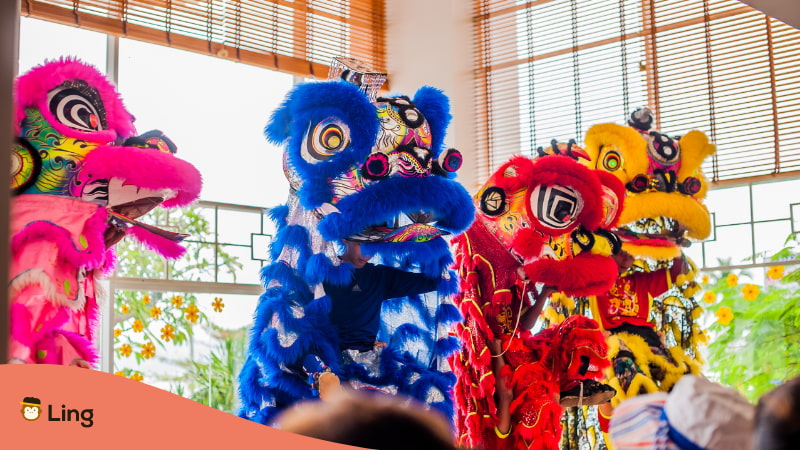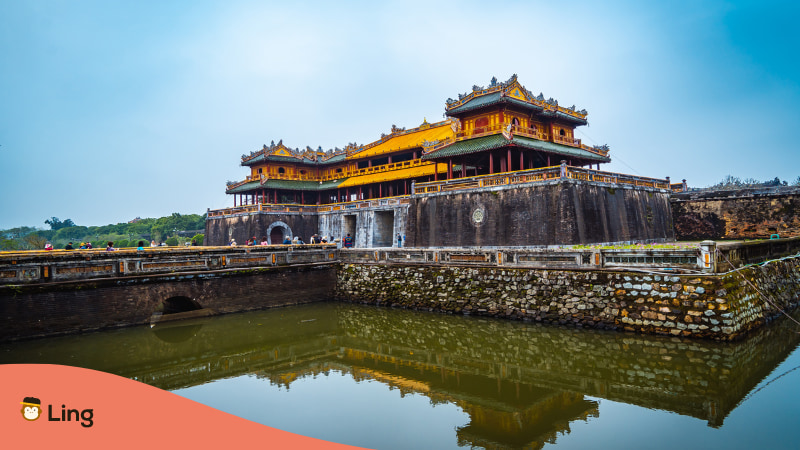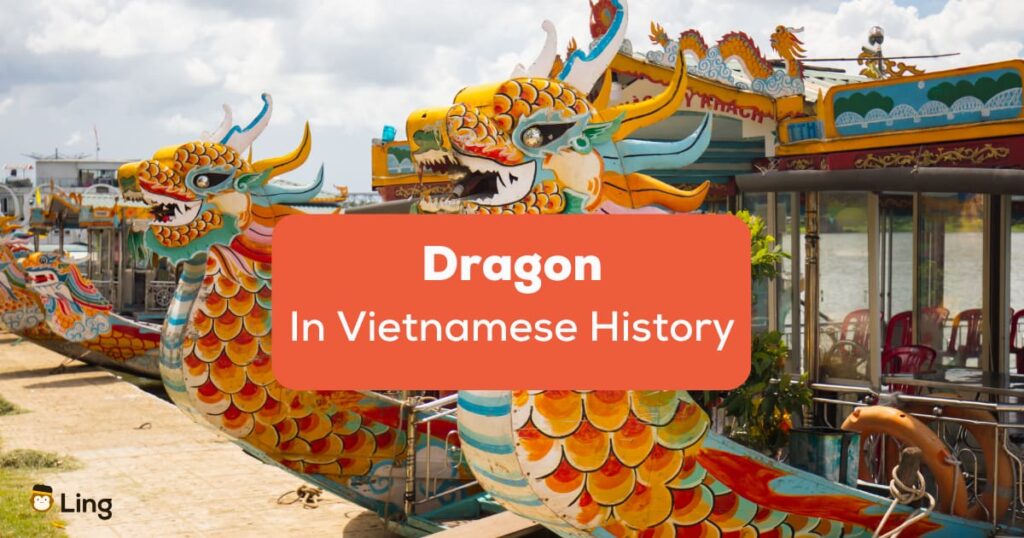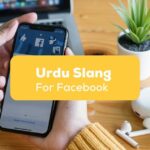If you visit Vietnam, you will see Vietnamese dragon images in many architecture, temples, palaces, and traditional dresses. The dragon image holds a high profile and is very dear to the locals, even in Vietnamese art.
The tale of such an eminent and vital figure in the culture of the Vietnamese people dates to a hundred years, with evolution dispersing into the history of the Vietnamese dragon with every passing era. So, let’s learn the facts behind the legend of the dragon in Vietnamese history and behold the magic that stamped its way since the 1009s.
Ever since the Second World War, the potency of dragons in oriented countries has been covered widely by media and the public, exposing their spirituality and cosmic importance to the international society. In Oriental cultures, dragons have an exalted position to hold, standing as a symbol and sign of nobility, vitality, strength, and power.
While dragons are frequently used in reference to China and other countries that are heavily influenced by Chinese culture and Chinese dragons, none has gone as far as Vietnam to claim the Vietnamese dragon as their ancestor and to give the capital of the country the name of this sacred and mythical animal. Let’s get to know more bout dragon in Vietnamese History.

The Legend Of The Vietnamese Dragon
The Chinese dragons and their culture have impacted many oriental countries. The Vietnamese population, for instance, is close to their robust culture and national identity, including the dragons. The ancestral Vietnamese dragon has been an important ancient myth since the Bronze Age in the Red River Basin. Hence, there are many stories that you can hear about a dragon in Vietnamese History.
In his book, “The Power of Myth,” Joseph Campbell writes that myth is not nonexistent in this ever-growing world. Evidently, in the culture of Vietnamese dragons, legend has played a crucial role in providing the most profound spiritual potential, inspiring history in ways one never thought of.
Con Rong Chau Tien
Con Rong Chau Tien is the phrase that refers to “Children of the Dragon and the Fairy.” Unlike Western countries, the people of the land of Vietnam call themselves the Cong Rong Chau Tien, indicating their ancestral birth from the spirits of the foremother dragon and magician forefather. They further led the legend of the Lac Long Quan and Au Co.
Legend tells that once upon a time, long ago, there existed a magician king in the land of the Linh Nam in ancient Vietnam called Kinh Duong Vuong. It is believed that he could walk on water and terra firma. One fine day, he decided to take a pleasure trip on a lake when he was delighted by the accidental meeting with the daughter of Long Vuong, the Dragon King of the sea, Long Nu.
After their mesmerizing interaction, the magician king married Long Nu and gave birth to their Herculean son, Lac Long Quan. He later mounted the throne and became the King Dragon of ancient Vietnam, Lac Viet.

The Son Of The Mother Dragon And Magician Father
As far as the local legend of the Dragon king born with the powers of dragon and magic goes, Lac Long Quan traveled the entire Linh Nam and restored peace and prosperity earlier disturbed by evil monsters. He killed the Gigantic Fish demon in the South Sea, whose three parts cut by the Dragon King became the present-day Island, Bach Long Vi, in the southern part of Ha Long Bay.
Later, it is believed that the dragon king also defeated the Nine-tailed demon who often violated the young women in human form and attempted rape and murder in the caves. Today, the caves are known as the West Lake in Hanoi. Another destruction of the king was the win over the demoniac Evil Tree.
The Sack Of Hundred Eggs
The tale of the Con Rong Chau Tien is yet to be finished. One time when the Vietnamese dragon king was facing the invasion of the Northern chieftain, he met Au Co, the daughter of the chieftain. Lac Long Quan stopped the troops and took Au Co as his queen. Later, the queen bore a sack of a hundred eggs that hatched in seven days giving birth to a hundred babies. Thus, Dong Bao is what Vietnamese people usually refer to themselves, literally translated, as “Born from the same sack.”
When they Grew up to be handsome beings, the king and queen decided to go separate ways as Long Quan believed he was the race of Dragons and the queen was the race of fairies from the mountains. Hence, creating the division of the lowlands and the highlands, the legend of Dragon-Fairy.
The mother taught the cultivation of rice and silkworms, and their eldest son eventually took over the father’s throne in the lowlands with the name Hung Vuong. He introduced the 18 Vietnamese Sovereigns, the Hong Bang Dynasty, beginning the 4000-year history of Vietnam.
The Concept Of A Dragon In Vietnamese History
The appearance of the Vietnamese dragons throughout the ages has not remained the same. Beginning from the Ly dynasty to the Nguyen dynasty, the image of the dragon kept changing concerning the nature of the policy.
Vietnamese Dragon In The Ly dynasty
The Dragon in the Ly dynasty looked innocent, with the original form of a snake. As the Dai la dragon (the previous dragon) was born during Chinese domination, the appearance of the Ly dragon marked the independence of Vietnam and embodied the policy nature at that time, which was soft and flexible. In 1010, during the Ly dynasty, when a royal barge landed at Dai La, the king saw a golden dragon rise in the sky. Considering such a phenomenon as a good omen, the king chose to name the new capital Thang Long (rising dragon), the city of the Soaring Dragon.
Since then, the Ly dragon has become the symbol of nobility and a significant part of Vietnamese art and architectural decoration. Fun fact: the Ly dynasty dragons for the king and people had distinct features. The king dragon had five claws, and the Public dragon had only four claws.
Vietnamese Dragon In Tran Dynasty
In the Tran dynasty, although the image of the dragon remained relatively similar, it had evolved into a bigger and stronger personification of national pride. There came horns in the dragon’s head; it was fat and highly furious. Such a substantial athletic shape signifies the dynasty’s spirit to fight against the Mongolian invasion that occurred in three waves.

The Dragon Le
China and the Chinese dragon highly influenced the Le dynasty and its dragon. It was no longer as innocent as the Ly dragon and as athletic as the Tran dragon. Now, it had taken the form of freedom, swaggering with a bossy character due to the embodiment of the feudal period. The image of this dragon created in 1467 can be seen in the Kinh Thien Palace even today, expressing a proud emotion.
Instances of the Le dragon are also found carved in wooden doors in Keo Pagoda, Co Loa temple, and a royal stone bed in Dinh temple. Not to mention, Vietnamese art has a moral stance of the dragon of the Le dynasty.
Vietnamese Dragon Of The Nguyen Dynasty
With the decline of feudalism came the presence of the differing Nguyen dragons. The dragons of the Nguyen dynasty were brutal under the influence of the Chinese dragon. It was no longer innocent, healthy, or bureaucratic. It became rigid. The Nguyen dragons are found mainly in the temples and the Red River Delta.
Learn More Vietnamese Facts Today!
It is a common belief in Asian myths that the nine dragons created rain. They took water from the sea and converted it into rain, pouring it onto the rice paddies. For Vietnamese people, dragons became a vivid symbol of rain, thunder, the fourfold deity could, and lightning. The dragon dance was popular among the natives and was used to invoke rain. With such artistic facts, the history of Vietnam and its dragons is mystically embedded into Vietnamese culture.
If you want to learn Vietnamese further, try Ling. It covers every topic that you need, from going to the grocery down to asking for directions. You can also check out Vietnamese Conical Hats: Learn 3 Fascinating Facts and 3 Best Facts About The Vietnamese Flag. Also, Ling has language experts from every corner of the world, and without any cost, you get access to more than 50+ national languages.
If you are interested in learning about other languages and cultures, Ling has your back! Just click on the app and start learning today.
Download the Ling app from the Apple Store or Google Play Store.



















